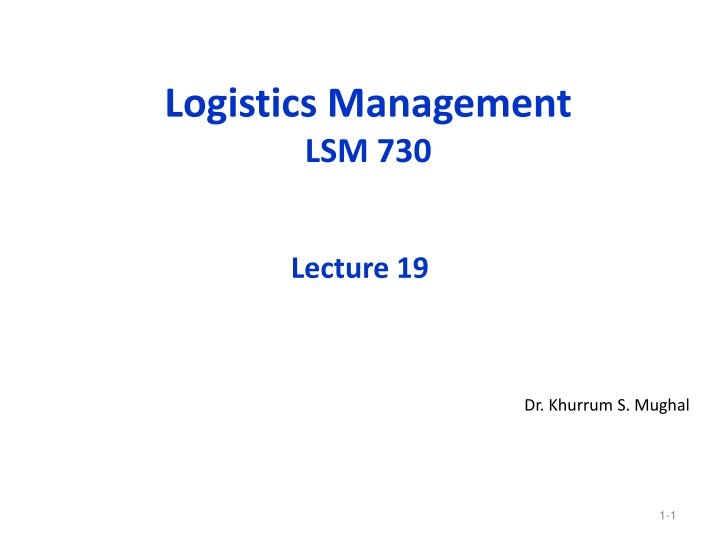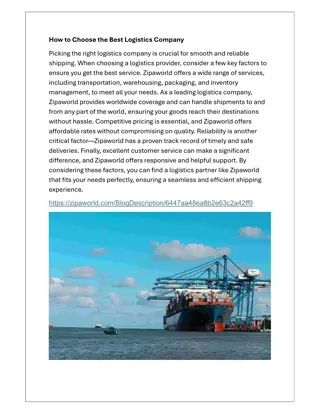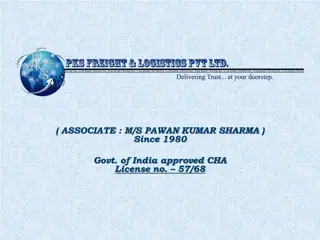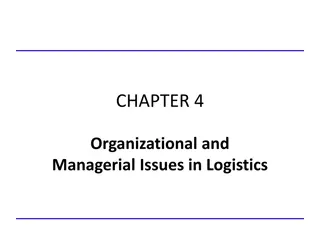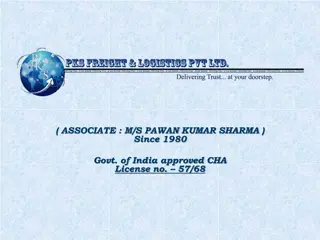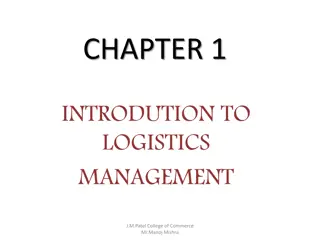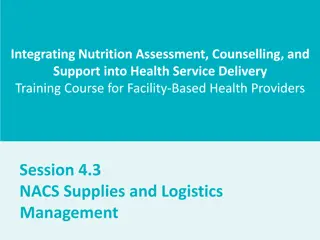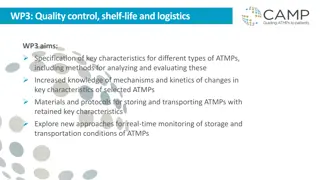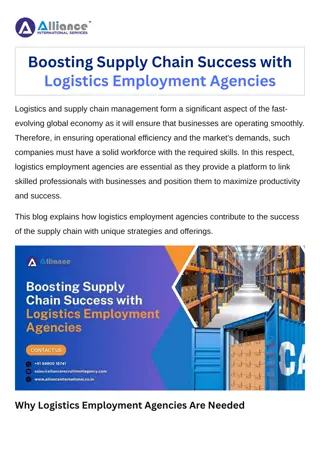Logistics Management LSM 730
Dive into logistics rates and examples, including line haul rates, freight classification, contract rates, and more. Explore scenarios like calculating transportation charges and break weights for shipments. Learn about stop-off privileges and gain insights into optimizing costs in logistics.
Download Presentation

Please find below an Image/Link to download the presentation.
The content on the website is provided AS IS for your information and personal use only. It may not be sold, licensed, or shared on other websites without obtaining consent from the author.If you encounter any issues during the download, it is possible that the publisher has removed the file from their server.
You are allowed to download the files provided on this website for personal or commercial use, subject to the condition that they are used lawfully. All files are the property of their respective owners.
The content on the website is provided AS IS for your information and personal use only. It may not be sold, licensed, or shared on other websites without obtaining consent from the author.
E N D
Presentation Transcript
Logistics Management LSM 730 Lecture 19 Dr. Khurrum S. Mughal 1-1
Rate Types Line haul rates Class >Freight classification of items >(National Motor Freight Classification of Selected Products) >Rate tables of tariffs Contract rates Drayage (local delivery) Commodity and contract rates Specific rates for given shipment sizes for specific products moving between designated points Special service charges Extra charges Diversion and reconsignment Stop-off privilege example 6-2
Class Rate Example Suppose we wish to ship 15,000 lb. (150 cwt.) of wheat flour from New York to Los Angeles by truck. The trucker offers a 40% discount from the published tariff. What is the transportation charge? From the freight classification table, this is item number 1090--00. It shows a minimum weight of 36,000 lb., which is greater than this shipment size. Therefore, the class rating is 55, or less-than-truckload. From the class 100 tariff, the rate is 6065, or $60.65 per cwt. With a 40% discount, the effective rate is (1- .40) x 60.65 = $36.39. The shipment charges are 0.55 x 36.39 x 150 = $3,002.18. Table 6-4 Table 6-5 Should always check to see if shipment can be declared at the next higher weight break for a lower rate and lower total charges 6-11 CR (2004) Prentice Hall, Inc.
Break Weight Question Suppose 9,000 lb. of Class 100 merchandise is to be shipped from New York to Dallas. From Table 6-4, the rate would be $52.21/cwt. However, should the shipment be priced at the next higher weight break rate of $40.11/cwt. for a lower cost? Rate = xWeight Break Weig ht Next Rate Next Current where: Break Weight = Weight above which the next higher weight break rate should be used for lower transport costs RateNext = Rate for next higher weight break WeightNext = Minimum weight of next higher weight break RateCurrent = Rate for true weight of shipment. 6-12 CR (2004) Prentice Hall, Inc.
Break Weight(Contd) Answer Calculate break weight 40 11 . 100 x = = Break Weight 76 82 . or , 7,682 lb. 52 21 . Since the 9,000 lb. shipment size exceeds the break weight of 7,682 lb., size as if a 10,000 lb., shipment for a total cost of $40.11x 100 = $4,011. Otherwise, the shipment would have cost $52.21x90 = $4,699. 6-13 CR (2004) Prentice Hall, Inc.
Stop-Off Privilege Example Suppose 3 shipments of J=8,000 lb., K=12,000 lb., and L=10,000 lb. originating at I are to be delivered in the following way. CR (2004) Prentice Hall, Inc. 6-6
Stop-Off Privilege Example(Contd) First, we compare the costs without the stop-off privilege. This would be to price as if each shipment is a separate shipment from I. Suppose we know the rates. Hence, Load, lb. Points Rate, $/cwt. Charges 8,000 12,000 10,000 I to J I to K I to L 3.05 3.35 3.60 $244.00 402.00 360.00 $1006.00 Total Now, we price with the stop-off privilege. We assume that all the volume (30,000 lb.) is to be delivered to the farthest stop and we use the rate to that point ($3.00/cwt.). A small stop off charge of $15.00 is made for each stop including the last stop. Hence, Load, lb. Points 30,000 I to L 3 stops at $15 each Rate, $/cwt. 3.00 Charges $900.00 The better choice All volume to the farthest stop 45.00 Total $945.00 CR (2004) Prentice Hall, Inc. 6-7
Private carrier costing Service Reliability Short Order Cycle Times Emergency Response Capability Improved Customer Contact Costs: Fixed Costs Operator Costs Vehicle Operating Costs 6-8 CR (2004) Prentice Hall, Inc.
Rate Profiles By distance Rates vary with the distance between origin and destination in the following manner CR (2004) Prentice Hall, Inc. 6-9
Rate Profiles(Contd) By volume Rates by shipment size have the following characteristic CR (2004) Prentice Hall, Inc. 6-10
